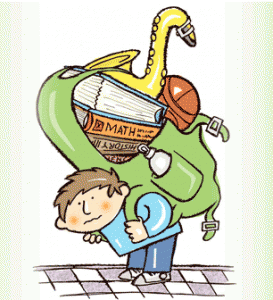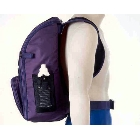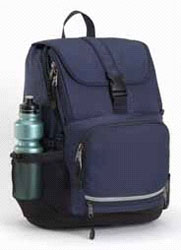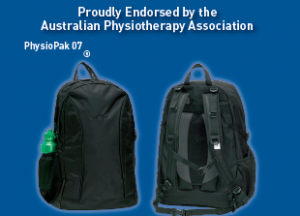It is important to fit your child’s school backpack properly, because according to a report by the Australian Consumer Product Safety Commission, 75 percent of all 8- to 12-year-olds have reported experiencing back pain from carrying backpacks that are too heavy. Not only should you buy a backpack that is the correct size, but you should also adjust the straps and pack it so the weight will be evenly distributed. Avoid being pressured to buy your child a backpack with only one shoulder strap.
When purchasing a pack look for one that carries an endorsement by a back care professional organisation such as the Australian Physiotherapy Association or Sports Medicine Australia.
Tips for Choosing the Right Backpack
- A pack should be made of firm material that prevents sag and keeps the load close to the spine. It should be adjustable to allow correct fitting to the person’s body.
- Packs with padded straps worn on both shoulders are the best way to carry loads.
- A fastened waist strap can help anchor the load and keep the load at waist height.
- It is important that your pack is the right size for your body. Don’t buy a big pack to “grow” into, adjust your load, not your body. When you sit down with a backpack on, it should not extend higher than your shoulders
- Purchase a child-sized backpack for children who are 5 to 10 years old. Older children can use standard size backpacks.
- Pack weight should be less than 10% body weight – which is probably a lot less than what many young people are carrying now. For example, a young person weighing 45 kg should not carry more than 4.5 kg in their backpack.
Fig 1. Standard PhysioPak Fig 2. PhysioPak 07
Bodysmart recommends the PhysioPak from Spartan, which is endorsed by the Australian Physiotherapy Association.
Fitting the Backpack
 Step 1: Load the backpack so that the largest items are closest to the child’s back so that the weight will be evenly balanced. Many backpacks have smaller compartments and pockets for loose items. If your school backpack does not have any pockets, put the smaller, loose items in last, away from the child’s back.
Step 1: Load the backpack so that the largest items are closest to the child’s back so that the weight will be evenly balanced. Many backpacks have smaller compartments and pockets for loose items. If your school backpack does not have any pockets, put the smaller, loose items in last, away from the child’s back.
Step 2: Place the backpack as high on the child’s back as possible. The entire loaded backpack should rest between the shoulders and the waist, held in place by the waist strap. Encourage your child to keep the waist strap buckled whenever she wears the backpack. This will also help her remember to use both shoulder straps. When children use only one strap slung over one shoulder, they are at a higher risk for back injuries from carrying their school backpack.
Step 3: Adjust the shoulder straps so that they fit close without being too tight. Insert a finger between the shoulder strap and the child’s shoulder. If you cannot fit your finger in easily, the shoulder strap is too tight.
REMEMBER…
Make sure to train your child to bend their knees when picking up the school backpack and then to use the leg muscles to help lift it up. This advice pertains to lifting any heavy load so as not to cause injury.
For further information please contact your Bodysmart Physiotherapist or call us on 9481 8708.













